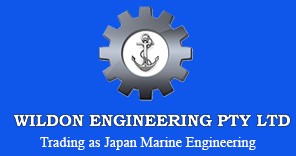Mitsubishi Schneider Filter: Uses and Applications
Blog | January 25th, 2018Active filtration technology keeps right on working when static solutions fall by the wayside. Picture a powered marine vessel, a place where sludge collects in machine troughs. These unprocessable residues have nowhere to go, except perhaps into a storage container for disposal after the excursion is over. A Mitsubishi Schneider Filter processes the unprocessable. Check out those paper-coated plates, the active filtration process, and the now safely discharging fluid stream.
Sizing Up A Mitsubishi Schneider Filter
And it is big, this pressurised filtration system. The reason for that large frame size is fairly self-explanatory. Inside the support housing, a paper rack is automatically feeding the filtration medium to the plate stack. Be it paper or cloth, the feed rack continually delivers this active screening element. Mounted inside pressurised chambers, as generated by a mechanical jack, the mucky ship sludge is forced to adhere to the paper/cloth coated discs. A cake forms as the filtered solids accumulate. On a busy vessel, this semi-automated filtration system can really be a labour-saver, for this solids-removal measure is all that’s required on the part of the maintenance crew.
Active Filtration Applications
Environmentally speaking, the system sludge accumulated during a long voyage has nowhere to go. Granted, there are containers for storing this thick fluid residue, but who wants to collect glop-filled barrels? No, an installed Mitsubishi Schneider filter will quickly reduce this problem until it’s more manageable. Dry cake blocks are easier to store than muck-stuffed barrels, after all. Outside of conventional marine applications, we find this invaluable pressurised filtration system in machine shops. The paper feeding those plate stacks processes dirty cooling oil. As the tool oil enters the feed manifold, the plates suspended in the pressurized chambers subtract the oil-suspended metal cuttings. Likewise, there are paper-activated machines filtering radioactive waste, caustic chemicals, fatty acids in food processing facilities, and numerous other overly viscous fluid residues. A passive filtration solution soon clogs under these conditions, but an automated paper feed doesn’t suffer from this critical flaw. Instead, the actively processed discharge issues from the equipment as a clear and pure stream.
The only part of the operational mechanism that requires a little manual aid is the cake production assembly. In plain English, the individual charged with caring for a Mitsubishi Schneider Filter is tasked with the job of removing the cake build-up. Cloth or paper, the automated plate coating collects on this absorption agent. It then dries, but an easy replacement mechanism is incorporated so that hardened block can be ejected without trouble.
Optimized by NetwizardSEO.com.au
Recent Posts
- Yanmar Parts Online Australia – Genuine Yanmar Spare Parts at Competitive Trade Prices
- Turbochargers Supply from Japan Marine: Wildon Engineering’s Excellence in Global Shipping
- Mitsubishi VOS Ballast Water Treatment System: Next-Generation Marine Environmental Solutions
- Yanmar Marine Compressors: Reliable Power Systems for Commercial Vessels
- Water-Lubricated Stern Tube Bearings Explained: How EVR Technology Supports Marine Propulsion
- YANMAR Auxiliary Generator Engine Parts for Commercial Vessels
- Fluid Control Systems: Innovations in Marine Applications
- Yanmar Diesel Generators Australian Distributor: Power for Shipping & Marine Operations
- Navigation & Communication Equipment: Essential Tools for Safe Voyages
- Stern Tube Seals: Preventing Leaks & Maintaining Vessel Integrity
